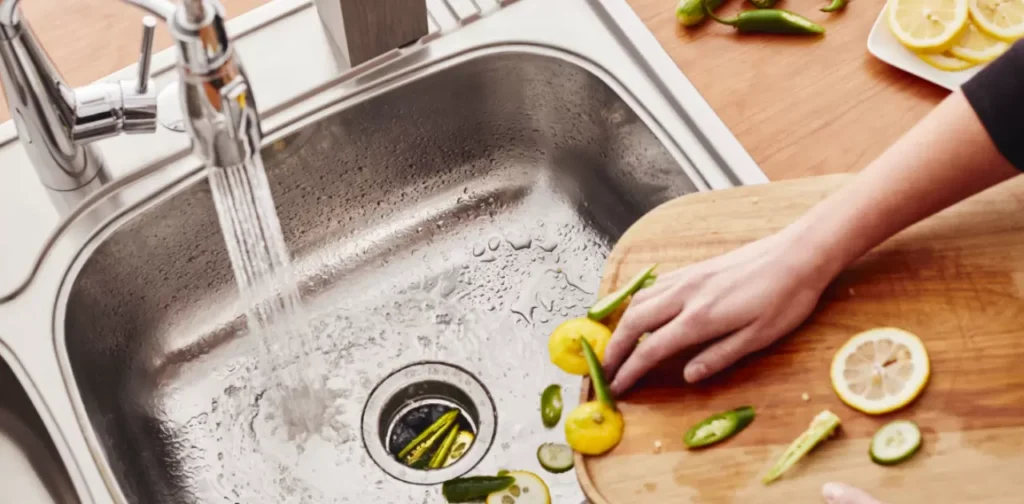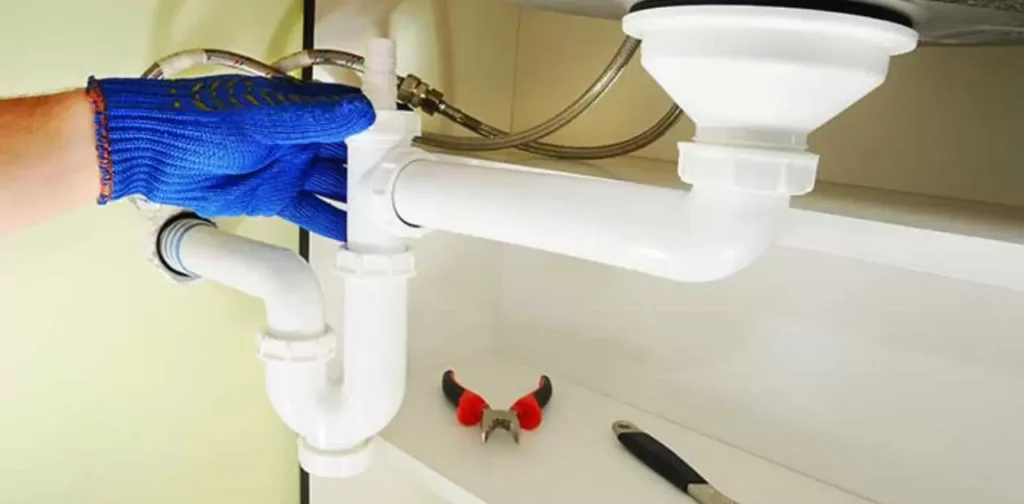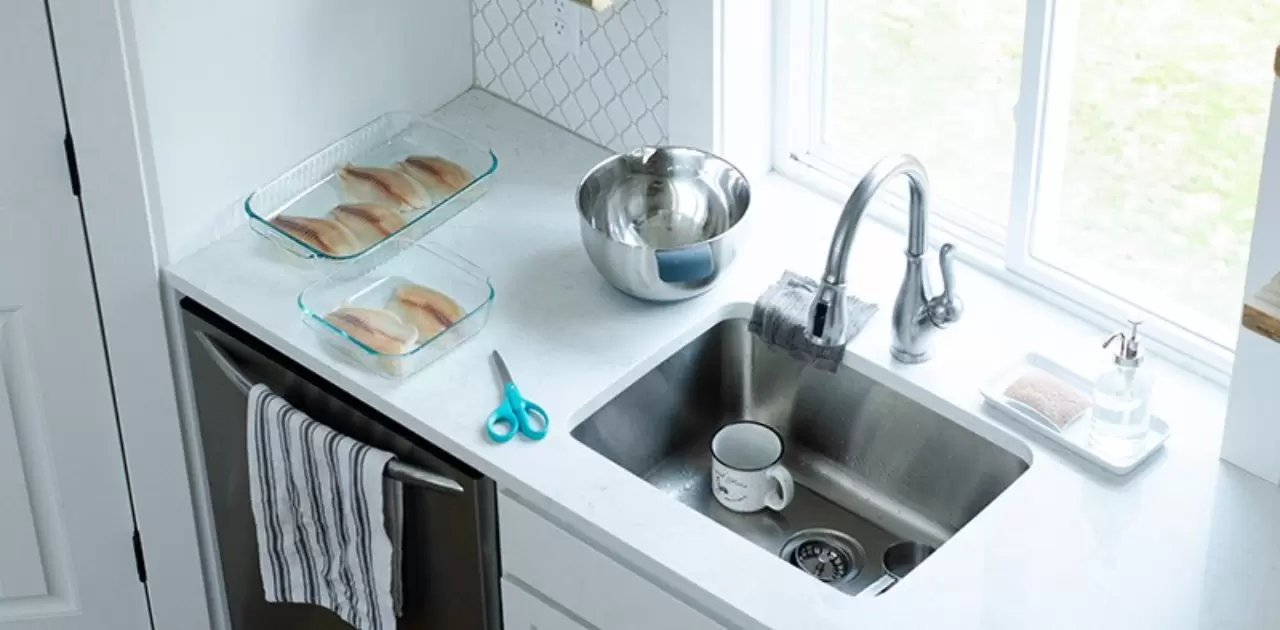A clogged kitchen sink can be a major inconvenience disrupting your daily routine. When water does not drain properly it often leaves a mess and can be frustrating to deal with. Thankfully fixing a clogged sink is often a straightforward task you can handle yourself.
Common causes of clogged sinks include food debris grease and soap buildup. These materials can block the pipes leading to slow drainage or standing water. Instead of immediately calling a plumber there are several effective methods you can try at home first.
We will explore six simple ways to unclog your kitchen sink. From using boiling water to employing a plumber’s snake These methods can help you get your sink draining smoothly again. With a little effort you can save time and money by tackling the problem yourself.
Attack with boiling water
Boiling water can often clear out hair grease soap residue and other debris that block your drain. It is the simplest solution and should be your first step in trying to unclog a sink.
- Boil half a gallon of water on your stove or use a kettle.
- Carefully pour the boiling water directly into the drain.
- Turn on the faucet to check if the water drains properly. If it is still slow or standing repeat the process.
Avoid using this method if your pipes are PVC as the boiling water can damage them.If the boiling water does not clear the clog after two tries you will need to try a different method. This means the clog is too stubborn for this easy fix.
Check the garbage disposal

If your sink has a garbage disposal it might be the cause of the clog. Often turning it on can break up the blockage and restore proper drainage.
If the disposal is not working it might need a reset. Locate the reset button on the unit press it and try running the disposal again.
Never put your hand in the disposal. Instead use an Allen wrench to manually turn the blades from the bottom if they are jammed. This can help dislodge any stuck debris.
Read more this: CRITERION WASHER REVIEWS: AN IN-DEPTH LOOK AT A POPULAR BRAND For (2024)
Plunge away the blockage
When your sink is clogged a plunger can be your best friend. This simple tool can effectively dislodge blockages and restore proper drainage to your sink. Here is how to use it:
- Fill the sink with hot water until it’s about halfway full creating a seal around the drain.
- Position the plunger over the drain and pump it up and down vigorously several times.
- Remove the plunger and check if the water starts draining. If not, repeat the plunging process.
If the sink continues to drain slowly or remains clogged after multiple attempts it is time to try a different approach. This suggests that the blockage may be more stubborn and require a different method to clear.
Break it down with baking soda and vinegar
For a natural and effective solution to a clogged sink turn to baking soda and vinegar. These household staples can work wonders in breaking down debris and restoring proper drainage. Here is how to use them:
- Start by removing any standing water from the sink using a cup or bowl.
- Pour one cup of baking soda down the drain ensuring it reaches the blockage.
- Follow this with one cup of white vinegar allowing the two ingredients to react.
- Immediately cover the drain to contain the fizzing action and let the mixture sit for about 15 minutes.
- After the time has passed remove the cover and flush the drain with hot tap water.
- For more stubborn clogs consider using boiling water to further break down the blockage.
While this method can be effective it may not work for all types of clogs. If the sink continues to drain slowly or remains clogged you may need to try a different approach.
Try the plumber’s snake
When all else fails a plumber’s snake can come to the rescue for stubborn sink clogs. This tool, also known as a drain auger is designed to navigate through pipes and break up blockages.
Using a plumber’s snake is relatively straightforward. First feed the snake into the drain slowly rotating it as you go to help navigate bends in the pipe. Once you reach the clog use the crank handle to break it up and pull it out.
If you do not have a plumber’s snake on hand you can fashion one using a wire coat hanger. Simply straighten out the hanger and bend one end into a hook to grab onto the debris. While not as effective as a traditional plumber’s snake this makeshift version can still be helpful in certain situations.
Also read this: Maximizing Small Spaces: Pool Decorating Ideas for Compact Yards
Clean the P-trap

If your sink is still clogged after trying other methods it might be time to clean the P-trap. The P-trap is the curved pipe located under your sink which often collects debris and causes blockages.
To clean the P-trap start by placing a bucket underneath to catch any water or debris. Then unscrew the connectors on either end of the trap and remove it. Clean out any gunk and residue from the pipe before reattaching it.
If the clog persists after cleaning the P-trap you may need to inspect further down the pipe or consider seeking professional help.Cleaning the P-trap is often an effective way to resolve common sink clogs.
How to prevent future clogs
Preventing future clogs is key to maintaining a smoothly functioning kitchen sink. Here are some simple tips to help keep your drains clear:
- Avoid pouring grease, fats, and oils down the drain, as they can solidify and cause blockages.
- Dispose of food waste properly by scraping plates into the trash or compost bin instead of rinsing them in the sink.
- Use a drain strainer to catch food particles and debris before they enter the pipes.
- Regularly flush your drains with hot water to help prevent buildup of grease and soap residue.
- Consider using enzyme-based drain cleaners periodically to break down organic matter and keep your pipes clear.
- Be mindful of what you put down the garbage disposal, avoiding items like fibrous vegetables, coffee grounds, and large chunks of food.
- Schedule regular maintenance checks with a plumber to catch any potential issues before they become major problems.
By following these preventive measures, you can reduce the likelihood of future clogs and keep your kitchen sink running smoothly for years to come.
Frequently Asked Questions
Can I use chemical drain cleaners to unclog my sink?
While they may provide a temporary fix, chemical drain cleaners can damage pipes and harm the environment.
How can I tell if the clog is in my garbage disposal?
If turning on the disposal produces a grinding noise or if water backs up into the sink, the clog may be in the disposal.
Is it safe to use boiling water to unclog PVC pipes?
No, boiling water can damage PVC pipes so it is best to avoid using this method if your pipes are PVC.
Can I use a plunger on a double sink?
Yes, but ensure the other drain is sealed to create proper suction.
How often should I clean my P-trap?
It’s recommended to clean the P-trap every few months to prevent buildup and clogs.
Can I use a plumber’s snake if I’m not experienced with plumbing?
Yes, plumber’s snakes are relatively easy to use for DIY unclogging, but exercise caution and follow instructions carefully.
What should I do if none of the DIY methods work?
If DIY methods fail to unclog the sink it is time to call a professional plumber to assess and resolve the issue.
Conclusion
Dealing with a clogged kitchen sink can be a frustrating experience but with the right approach it is often a problem you can solve on your own. By following the simple methods outlined in this guide you can effectively unclog your sink and restore proper drainage.
Remember to start with the simplest solutions such as boiling water or using a plunger before moving on to more advanced methods like using a plumber’s snake or cleaning the P-trap. And don’t forget to take preventive measures to avoid future clogs.
Such as disposing of grease properly and regularly flushing your drains with hot water. With these tips in mind you can keep your kitchen sink running smoothly and avoid the inconvenience of clogged drains in the future.











